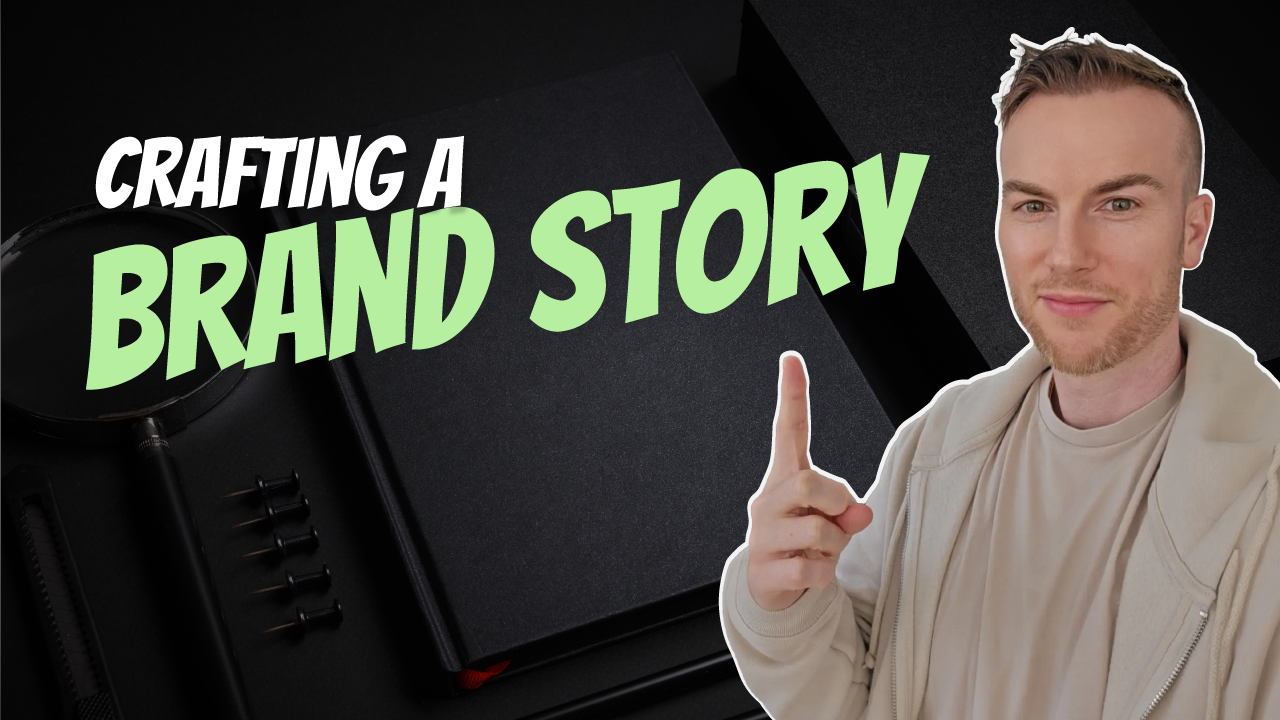All rights reserved | © 2024 | Privacy Policy

Capturing and holding the attention of your audience is more challenging than ever. This is where storytelling marketing comes into play. By weaving compelling narratives into your marketing efforts, you can create deeper emotional connections with your audience, making your brand more memorable and engaging.
In this post, we discuss how to create a brand story.
1. Know Your Audience
Understanding your audience is crucial for effective storytelling. Research their interests, values, and pain points to create a story that resonates with them.
Develop detailed audience personas to guide your storytelling efforts and ensure your narrative aligns with their needs, desires, interests, and values.
2. Define Your Message
Your brand’s story should communicate a clear and compelling message. This message should reflect your brand’s mission, values, and unique selling propositions.
Take the time to articulate what you want your audience to take away from your story and how you want them to feel.
3. Structure Your Story
A well-structured story has a clear beginning, middle, and end. Start by setting the scene and introducing your characters and conflict. Build tension in the middle by elaborating on the challenges and obstacles faced. Finally, provide a resolution that showcases the positive impact of your brand. Maintaining a coherent structure ensures your story is engaging and easy to follow.
Patek Philippe has their famous, “You never actually own a Patek Philippe…” campaign, which is really good.
I thought it would be fun to create my own Patek campaign. I’d call it the ‘Be who you are meant to be’ campaign. It leans heavily into values such as status, family, and personal growth to create a series of ads that embrace your true potential.
The copy may read something like: ‘A Patek is more than a timepiece, it’s an expression of your success and sophistication. Be who you were meant to be – confident, refined, and ready to conquer any room.’

If you are interested in a more detailed breakdown of this campaign, check out the full post.
Continue reading: How Patek Philippe Could Use Storytelling Marketing
Social Media
Social media platforms are perfect for storytelling. Use Instagram Stories, Facebook posts, and TikTok videos to share bite-sized narratives that capture attention. Visual content, such as images and videos, can enhance your storytelling by making it more vivid and engaging.
Website and Blogs
Your website and blog are ideal places to tell longer, more detailed stories. Use your blog to share customer success stories, behind-the-scenes insights, and thought leadership pieces. Ensure your website content reflects your brand’s narrative and guides visitors through a compelling journey.
Email Marketing
Email campaigns provide an opportunity to tell a continuous story over a series of emails. Use storytelling to create anticipation and keep your audience engaged. Whether it’s a welcome series for new subscribers or a product launch campaign, weaving a narrative into your emails can significantly enhance their impact.
Video Content
Video is a powerful medium for storytelling. It combines visuals, audio, and narrative to create an immersive experience. Use video to share brand stories, customer testimonials, and product demonstrations. Invest in high-quality production to ensure your videos leave a lasting impression.
Engagement Metrics
Track key engagement metrics to measure the success of your storytelling efforts. Look at likes, shares, comments, and views to gauge how well your stories are resonating with your audience. High engagement indicates that your storytelling is effective and captivating.
Conversion Rates
Storytelling can significantly influence conversion rates. By creating an emotional connection and building trust, stories can encourage your audience to take action. Analyze conversion data to see how your storytelling efforts are impacting sales and other key conversion metrics.
Brand Loyalty
Storytelling fosters brand loyalty by creating a deeper connection with your audience. Use surveys and feedback mechanisms to assess how your storytelling efforts are influencing customer loyalty and retention. Loyal customers are more likely to advocate for your brand and become repeat buyers.
By integrating compelling narratives into your marketing efforts, you can create deeper connections, enhance brand recall, and drive conversions. Start crafting your brand’s story today and unlock the full potential of storytelling marketing.
Ready to elevate your marketing with the power of storytelling? Contact us for a consultation and discover how we can help you craft compelling stories that resonate with your audience.






If you’re looking to make a move with your marketing, reach out to us. We are priced fairly, we’re straight shooters, and are the very best at what we do.